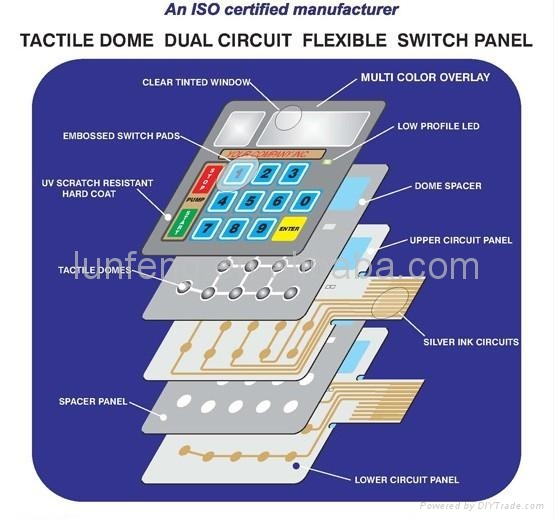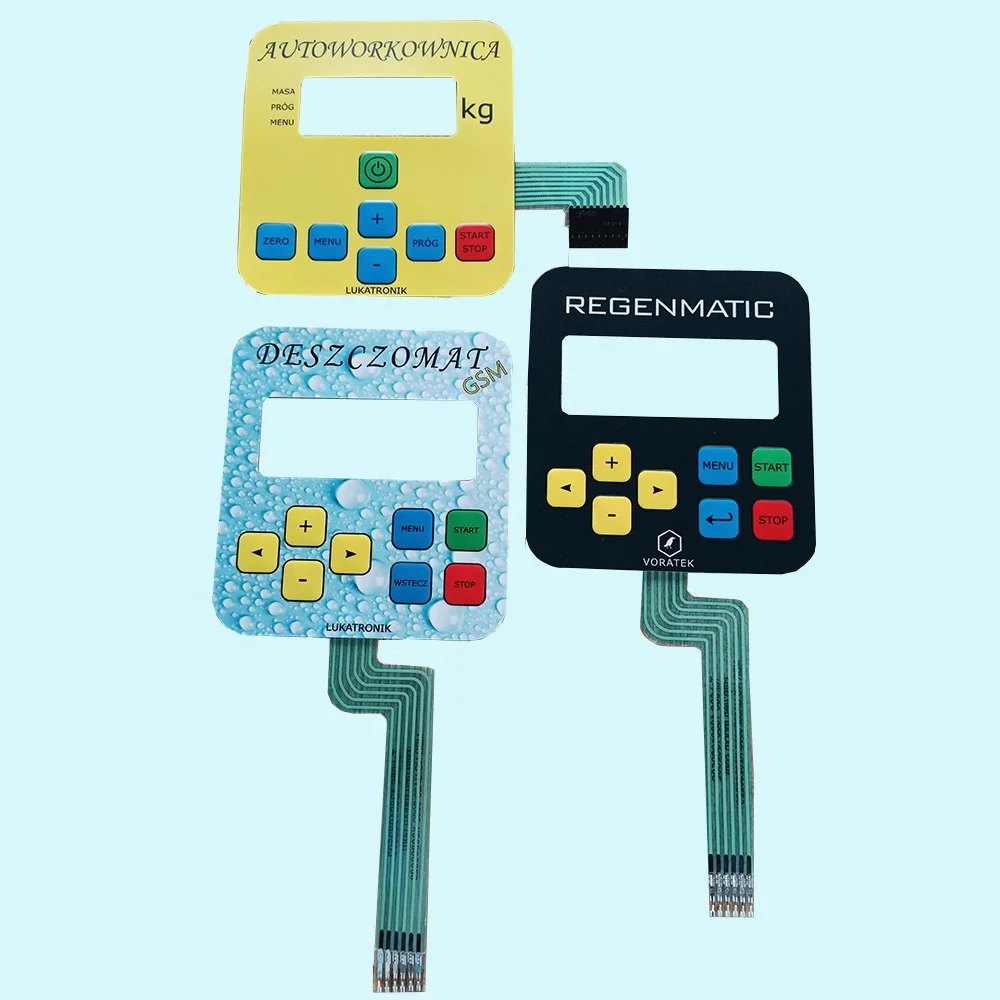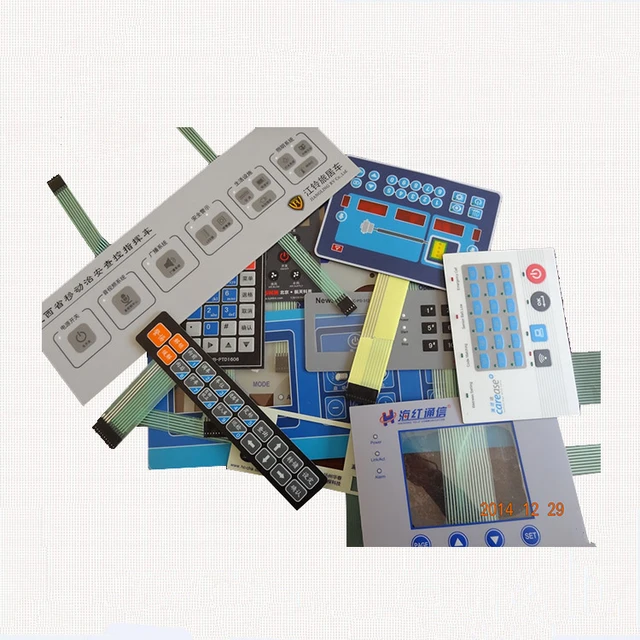How Membrane Switches Are Shaping the Future of Electronic Interfaces
How Membrane Switches Are Shaping the Future of Electronic Interfaces
Blog Article
Recognizing Membrane Changes: The Secret to Durable and Dependable Controls

What Are Membrane Layer Switches?
Membrane layer buttons are a sophisticated service in the world of user interface innovation, integrating performance and style seamlessly. These tools work as an interface in between individuals and digital systems, incorporating several elements right into a portable format. Usually built from versatile, slim layers of materials, membrane layer switches are developed to respond to touch, allowing individuals to engage with machinery and digital tools effectively.
The primary elements of a membrane layer button include a printed circuit layer, graphic overlay, and a spacer layer that prevents unexpected activation. The graphic overlay can be customized to show brand name identification or user choices, improving appearances while making sure usability. Membrane switches are commonly utilized in various applications, consisting of clinical gadgets, consumer electronics, and industrial equipment, owing to their longevity and resistance to ecological elements such as moisture and dirt.
Among the crucial advantages of membrane switches is their ability to endure deterioration, making them perfect for high-traffic settings. Furthermore, they are lightweight and need marginal space, enabling innovative designs in product development. Generally, membrane changes stand for a efficient and useful option for contemporary electronic interfaces, weding modern technology with user-centric style principles.
Just How Membrane Switches Work
The operation of membrane switches joints on an easy yet effective mechanism that converts individual input into electronic signals. These switches consist of several layers, normally consisting of a visuals overlay, a spacer layer, and a circuit layer. When a customer presses the switch, the top layer warps, allowing a conductive component in the circuit layer to reach an equivalent conductive pad on the bottom of the graphic overlay. This get in touch with shuts the circuit and sends a digital signal to the device, indicating that the switch has actually been triggered.
The layout of membrane switches can differ, but they usually include domes or responsive aspects to supply comments to the individual, enhancing the total experience - membrane switch. The materials utilized in membrane layer switches, such as polyester or polycarbonate, add to their sturdiness and resistance to environmental aspects, consisting of dampness and dust. The printed circuits are commonly encapsulated, which protects them from wear and tear over time.
Advantages of Membrane Layer Buttons

In addition, membrane switches are recognized for their sturdiness. Constructed from robust products, they are immune to dirt, moisture, and physical wear, which considerably prolongs their lifespan contrasted to conventional mechanical buttons. This longevity makes them especially suitable for high-traffic settings and applications calling for durability.
An additional significant benefit is the ease of cleaning and maintenance. The smooth surface of membrane changes minimizes dirt build-up and is usually resistant to spills, making them excellent for settings that call for frequent sanitization.
In addition, membrane buttons offer a streamlined profile, leading to a thinner layout that can be incorporated into different gadgets without adding mass. This attribute not only enhances the visual allure but additionally adds to a more ergonomic item style.
Applications of Membrane Buttons
Flexible and user-friendly, membrane layer switches find applications throughout a wide variety of industries, including clinical devices, customer electronic devices, and commercial tools. In the medical area, these buttons are indispensable to gadgets such as analysis devices, patient surveillance systems, and mixture pumps, where dependability and convenience of cleaning are critical. Their ability over at this website to keep and stand up to extreme atmospheres performance makes them perfect for such applications.

In customer electronic devices, membrane buttons are utilized in items like microwaves, washing devices, and push-button controls - membrane switch. Their smooth design allows for instinctive interface, wikipedia reference improving the overall customer experience while offering sturdiness and resistance to wear and tear
Commercial equipment likewise takes advantage of membrane layer switches, specifically in control panels for equipment and automation systems. These switches provide protection against dust and dampness, guaranteeing consistent performance in challenging settings. Their customizable attributes permit producers to customize them to certain operational demands, enhancing effectiveness and functionality.
Picking the Right Membrane Change
When picking a membrane layer button, it is necessary to think about various variables that affect efficiency and suitability for specific applications. The primary factors to consider include ecological problems, tactile responses, resilience, and layout specifications.
First, analyze the operating setting; buttons subjected to dampness, chemicals, or extreme temperature levels require specific materials to make sure longevity and functionality. Next off, review the requirement for tactile feedback. Relying on individual interaction, some applications might benefit from a tactile action to verify activation, while others might favor a non-tactile style for aesthetic reasons.
Resilience is one more vital factor; membrane buttons should be made to stand up to regular usage, influences, and abrasion. Ensure the picked button can endure the anticipated lifecycle, particularly in high-usage scenarios.

Verdict
In conclusion, membrane switches serve as vital parts in the layout of reputable and resilient control systems across numerous markets. The convenience of membrane layer switches permits for customized services that satisfy certain operational demands, enhancing their value in contemporary technology.
Membrane layer switches over stand for an essential aspect of modern interface layout, mixing performance with resilience in various applications.Membrane layer switches are Continue an innovative service in the world of individual interface technology, combining functionality and design effortlessly. Generally created from versatile, slim layers of materials, membrane layer buttons are developed to respond to touch, enabling users to interact with machinery and electronic tools properly.
The style of membrane buttons can vary, however they commonly include domes or responsive aspects to supply responses to the customer, enhancing the general experience.In conclusion, membrane layer switches over serve as important parts in the style of sturdy and reliable control systems across numerous markets.
Report this page